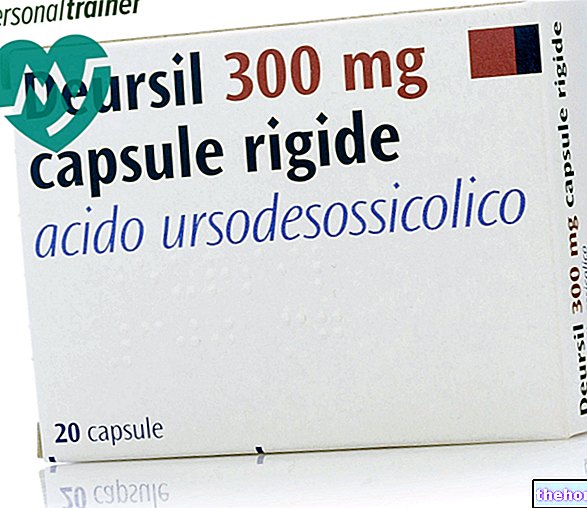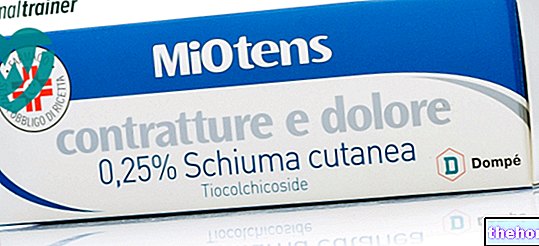Active ingredients: Live attenuated typhoid vaccine
Vivotif Hard gastro-resistant capsules
Indications Why is Vivotif used? What is it for?
Pharmacotherapeutic group:
Live attenuated typhoid vaccine for oral use.
Indications
Active immunization, orally, against typhoid fever.
Vivotif is recommended for adults and children from 5 years of age.
Contraindications When Vivotif should not be used
Hypersensitivity to the active substance or to any of the excipients.
Allergic reaction to a previous dose of Vivotif.
Congenital or acquired immune deficiency.
Concomitant treatment with immunosuppressive drugs (including prolonged administration of high-dose systemic corticosteroids (oral or injectable)) or antimitotic drugs.
Vaccination should be deferred during acute febrile illness and acute intestinal infections, as well as during and up to three days after antibiotic and sulfonamide treatment.
Precautions for use What you need to know before taking Vivotif
Pregnancy and breastfeeding
Vivotif administration during pregnancy has not been evaluated in clinical studies.
Vivotif capsule shell contains dibutyl phthalate (DBP) and diethyl phthalate (DEP)
Vivotif is not recommended during pregnancy and in women of childbearing potential who are not using contraceptive measures.
It is not known whether the live-attenuated strain Ty21a is excreted in human milk. It is also not known to what extent the excipients DBP and DEP are excreted in human milk. The risk to newborns / infants cannot be excluded. The physician should decide whether to discontinue breastfeeding or to avoid vaccination with Vivotif taking into account the benefits of breastfeeding for the baby and the benefits of vaccination for the woman.
Interactions Which drugs or foods can change the effect of Vivotif
The immune response may be reduced in patients with congenital or acquired immunodeficiency, receiving immunosuppressive drugs (including prolonged administration of high-dose systemic corticosteroids (oral or injectable)) or antimitotic drugs; it can be suppressed if antibiotics or sulfonamides active on S. typhi are used simultaneously.
Warnings It is important to know that:
When traveling to areas at risk, it is advisable to start vaccination two weeks before leaving: protection begins about 10 days after taking the third dose of Vivotif.
In risk areas, revaccination is recommended every three years.
When traveling from non-endemic to endemic areas, annual revaccination is recommended.
Antimalarial chemoprophylaxis can be started, if necessary, 3 days after the last dose of Vivotif. If antimalarial prophylaxis has already started with chloroquine, mefloquine, the pyrimethamine / sulfadoxine combination or atovaquone / proguanil, Vivotif can be administered without stopping the drug. antimalarial treatment. The intake of the doses of mefloquine and Vivotif must be separated by at least 12 hours. If antimalarial prophylaxis has already been started with drugs other than those listed above, then the antimalarial drug should be stopped 3 days before administering Vivotif.
Other vaccinations, including live polio, cholera and yellow fever vaccines, or with the combination measles, mumps and rubella (MMR) can be given at the same time.
Vivotif contains phthalates
The capsule shell of Vivotif contains phthalates, including dibutyl phthalate (DBP) and diethyl phthalate (DEP), which have shown reproductive and developmental toxicity in several animal species and suspected endocrine disturbances in humans.
Therefore Vivotif should be administered to children and individuals with low body weight only after having carefully evaluated the benefit-risk ratio.
Revaccination is an additional source of exposure to phthalates.
Effects on ability to drive and use machines
Vivotif does not affect the ability to drive or use machines
Dosage and method of use How to use Vivotif: Dosage
One capsule a day, every other day (ie one capsule on day 1, day 3 and day 5), both in children and adults, to be swallowed with a little "d" not hot water (the temperature should not exceed body temperature, 37 ° C), at least one hour before meals.
People who have difficulty swallowing can pour the contents of the capsules into a little water or liquid that is not hot. In this case, the reconstituted vaccine should be administered 2-3 minutes after neutralizing gastric acidity with antacid preparations (sodium bicarbonate, calcium carbonate, aluminum hydroxide, etc.).
Do not chew the capsules.
If the vaccination program consisting of three capsules is not completed, the optimal immune response is not guaranteed
Revaccination
Revaccination is carried out with three doses as for the primary vaccination.
In regions at risk revaccination is recommended every 3 years.
When traveling from non-endemic areas to endemic areas it is advisable to revaccinate every year.
Pediatric population
The safety and efficacy of Vivotif in children less than 5 years of age has not been established and therefore Vivotif is not recommended in this population.
Overdose What to do if you have taken too much Vivotif
Occasional reports of overdose have been received. No symptoms other than those reported with the indicated dosage have been reported. Although no serious consequences are expected if up to three doses are taken at the same time, an optimal immune response cannot be guaranteed.
In case of accidental intake of an excessive dose of Vivotif, notify your doctor immediately or go to the nearest hospital.
Side Effects What are the side effects of Vivotif
Like all medicines, Vivotif can cause side effects, although not everybody gets them.
Over 1.4 million Vivotif capsules have been administered in controlled clinical trials. The convention defining the frequency of adverse effects is as follows:
Very common (≥1 / 10);
Common (≥1 / 100,
Uncommon (≥1 / 1,000 to
Rare (≥1 / 10,000,
Very rare (
Not known (cannot be estimated from the available data).
The following adverse reactions have been reported in clinical trials
Nervous system disorders
Common: headache
Gastrointestinal disorders
Common: abdominal pain, nausea, diarrhea, vomiting
Skin and subcutaneous tissue disorders
Common: skin rash
General disorders and administration site conditions
Common: fever
These reported symptoms resolved spontaneously within a few days. No serious systemic adverse reactions were reported.
Based on spontaneously reported reports, the following additional adverse events have been reported post-marketing. The frequency of these adverse reactions is unknown (cannot be estimated from the available data).
Disorders of the immune system
Anaphylaxis, hypersensitivity reactions including related symptoms such as angioedema and dyspnoea
Metabolism and nutrition disorders
Decreased appetite
Nervous system disorders
Paresthesia, dizziness
Gastrointestinal disorders
Flatulence, abdominal distension
Skin and subcutaneous tissue disorders
Skin reactions, such as dermatitis, rash, itching and hives
Musculoskeletal system disorders
Arthralgia, myalgia, back pain
General disorders and administration site conditions
Asthenia, malaise, fatigue, chills, flu-like syndrome
Pediatric population
The frequency, type and severity of adverse reactions expected in children over 5 years of age are the same as in adults.
Compliance with the instructions contained in the information leaflet reduces the risk of undesirable effects.
If you get any side effects, talk to your doctor or pharmacist. This includes any possible side effects not listed in this leaflet. You can also report side effects directly via https://www.aifa.gov.it/content/segnalazioni-reazioni-avverse
By reporting side effects you can help provide more information on the safety of this medicine.
Expiry and Retention
Expiry: see the expiry date printed on the package.
The expiry date refers to the product in intact packaging, correctly stored.
Warning: do not use the medicine after the expiry date indicated on the package. Store in a refrigerator (2 ° C-8 ° C). Keep the blister in the outer packaging to protect the medicine from light. Inadequate storage does not guarantee the efficacy of the vaccine. Medicines should not be disposed of via wastewater or household waste. Ask your pharmacist how to throw away medicines you no longer use. This will help protect the environment.
KEEP OUT OF THE SIGHT AND REACH OF CHILDREN.
Composition
One capsule (corresponding to 1 dose) contains:
Active principle:
Viable Salmonella typhi (S. typhi), strain Ty21a attenuated, not less than 2,000 million viable organisms attenuated in freeze-dried form
Excipients: Capsule contents: sucrose, lactose, ascorbic acid, casein hydrolyzate, magnesium stearate.
Capsule composition: E171 (titanium dioxide), E172 (yellow iron oxide and red iron oxide), E127 (erythrosine), gelatin.
Capsule shell: hydroxypropylmethylcellulosaphthalate (HP-MCP) -50, dibutylphthalate, diethylphthalate, ethylene glycol.
Pharmaceutical form and content
Hard gastro-resistant capsules.
1 blister of three capsules
50 blisters of three capsules
Not all pack sizes may be marketed.
Source Package Leaflet: AIFA (Italian Medicines Agency). Content published in January 2016. The information present may not be up-to-date.
To have access to the most up-to-date version, it is advisable to access the AIFA (Italian Medicines Agency) website. Disclaimer and useful information.
01.0 NAME OF THE MEDICINAL PRODUCT
VIVOTIF HARD GASTRORESISTANT CAPSULES
LIVE ATTENUATED VACCINE FOR ORAL USE (STRAIN Ty21a)
02.0 QUALITATIVE AND QUANTITATIVE COMPOSITION
One capsule (corresponding to 1 dose) contains:
Active principle:
Salmonella typhi viable (S. typhi), strain Ty21a attenuated, not less than 2,000 million viable organisms attenuated in lyophilized form.
For the full list of excipients, see section 6.1.
03.0 PHARMACEUTICAL FORM
Hard gastro-resistant capsules.
04.0 CLINICAL INFORMATION
04.1 Therapeutic indications
Active immunization, orally, against typhoid fever.
Vivotif is recommended for adults and children from 5 years of age.
04.2 Posology and method of administration
One capsule a day, every other day (ie one capsule on day 1, day 3 and day 5), for both children and adults. The capsule should be swallowed with cold or lukewarm water (the temperature should not exceed body temperature, 37 ° C), at least one hour before meals.
People, who are unable to swallow, can pour the contents of the capsules into cold or lukewarm water. In this case the gastric acidity must be neutralized by taking antacids (sodium bicarbonate, calcium carbonate, aluminum hydroxide, etc.) 2-3 minutes before taking the vaccine.
Do not chew the capsules.
If the vaccination course, consisting of 1 capsule x 3 times, is not completed, the optimal immune response is not guaranteed.
When traveling to areas at risk, it is advisable to start vaccination 2 weeks before leaving: the protective action begins about 10 days after taking the third dose of Vivotif.
Revaccination
Revaccination consists of 1 capsule x 3 times, using the same schedule as the primary vaccination.
In risk areas, revaccination is recommended every three years.
When traveling from non-endemic to endemic areas, annual revaccination is recommended.
Pediatric population
The safety and efficacy of Vivotif in children less than 5 years of age have not been established.
04.3 Contraindications
- Allergic reaction to a previous dose of Vivotif.
- Hypersensitivity to the active substance or to any of the excipients.
- Congenital or acquired immunodeficiency.
- Concomitant treatment with immunosuppressive drugs (including prolonged administration of high-dose systemic corticosteroids) or antimitotic drugs.
04.4 Special warnings and appropriate precautions for use
Vaccination should be postponed in case of acute febrile illness and acute gastrointestinal infections, as well as during and up to three days after treatment with antibiotics or sulfonamides.
If malaria prophylaxis is planned, an interval of at least 3 days should generally be maintained between the last dose of Vivotif and the initiation of malaria prophylaxis (for detailed information, see section 4.5).
The immune response may be reduced in patients with congenital or acquired immunodeficiency, which includes treatments with immunosuppressive drugs, including prolonged administration of high-dose systemic corticosteroids.
Not everyone who has taken Vivotif will be fully protected against typhoid fever. Vaccinated individuals must continue to take personal precautions to avoid exposure to typhoid organisms, ie travelers must take all necessary precautions to avoid contact with or ingestion of potentially contaminated food or water. In addition, the protection lasts one year, for travelers from non-endemic to endemic areas, and at least 3 years for people living in areas at risk. See section 4.2 (Revaccination).
The capsule shell of Vivotif contains phthalates, including dibutyl phthalate (DBP) and diethyl phthalate (DEP), which have shown reproductive and developmental toxicity in several animal species and suspected endocrine disruption in humans (see section 5.3 Preclinical safety data). .
Therefore Vivotif should be administered to children and individuals with low body weight only after having carefully evaluated the benefit-risk ratio.
Revaccination is an additional source of exposure to phthalates.
Pediatric population
No specific data are available for children below 5 years of age.
Vivotif is not recommended in these individuals.
04.5 Interactions with other medicinal products and other forms of interaction
The immune response may be reduced in patients with congenital or acquired immunodeficiency, which includes treatments with immunosuppressive drugs, including prolonged administration of high-dose systemic corticosteroids.
Vaccination with Vivotif should be postponed during and for at least 3 days before and after treatment with antibiotics or sulphonamides, due to possible inhibition of the growth of the vaccine microorganisms and the potential attenuation of the immune response.
Antimalarial chemoprophylaxis can be started, if necessary, 3 days after the last dose of Vivotif. If malaria prophylaxis has already started with chloroquine, mefloquine, the pyrimethamine / sulfadoxine combination or atovaquone / proguanil, Vivotif can be administered without stopping the drug. antimalarial treatment. The intake of the doses of mefloquine and Vivotif must be separated by at least 12 hours. If antimalarial prophylaxis has already been started with drugs other than those listed above, then the antimalarial drug should be stopped 3 days before taking Vivotif.
Ty21a vaccine can be administered concomitantly with other vaccines, including live polio, cholera and yellow fever vaccines or with the combination measles, mumps and rubella (MMR).
04.6 Pregnancy and breastfeeding
Fertility and Pregnancy
Vivotif administration during pregnancy has not been evaluated in clinical studies.
The capsule shell of Vivotif contains dibutyl phthalate (DBP) and diethyl phthalate (DEP).
Animal studies have shown reproductive and developmental toxicity associated with DBP and DEP (see section 5.3).
Vivotif is not recommended during pregnancy and in women of childbearing potential who are not using contraceptive measures.
Feeding time
It is not known whether the live-attenuated strain Ty21a is excreted in human milk. It is also not known to what extent the excipients DBP and DEP are excreted in human milk.
The risk to newborns / infants cannot be excluded.
The physician should decide whether to discontinue breastfeeding or to avoid vaccination with Vivotif taking into account the benefits of breastfeeding for the baby and the benefits of vaccination for the woman.
04.7 Effects on ability to drive and use machines
Vivotif does not affect the ability to drive or use machines.
04.8 Undesirable effects
Over 1.4 million Vivotif capsules have been administered in controlled clinical trials.
The convention defining the frequency of adverse effects is as follows:
Very common (≥1 / 10);
Common (≥1 / 100,
Uncommon (≥1 / 1,000 to
Rare (≥1 / 10,000,
Very rare (
Frequency not known (cannot be estimated from the available data).
The following adverse reactions were reported in the course of clinical studies
Nervous system disorders
Common headache
Gastrointestinal disorders
Common: abdominal pain, nausea, diarrhea, vomiting
Skin and subcutaneous tissue disorders
Common: skin rash
General disorders and administration site conditions
Common: fever
These reported symptoms resolved spontaneously within a few days. No serious systemic adverse reactions were reported.
Based on spontaneously reported reports, the following more adverse events were reported from post-marketing surveillance. The frequency of these adverse reactions is unknown (cannot be estimated from the available data).
Disorders of the immune system
Anaphylaxis, hypersensitivity reactions including related symptoms such as angioedema and dyspnoea
Metabolism and nutrition disorders
Decreased appetite
Nervous system disorders
Paresthesia, dizziness
Gastrointestinal disorders
Flatulence, abdominal distension
Skin and subcutaneous tissue disorders
Skin reactions, such as dermatitis, rash, itching and hives
Musculoskeletal system disorders
Arthralgia, myalgia, back pain
General disorders and administration site conditions
Asthenia, malaise, fatigue, chills, flu-like syndrome
Pediatric population
Despite the limited data available, the frequency, type and severity of adverse reactions expected in children over 5 years of age are the same as in adults.
Reporting of suspected adverse reactions
The reporting of suspected adverse reactions that occur after the authorization of the medicinal product is important, as it allows continuous monitoring of the benefit / risk ratio of the medicinal product. Healthcare professionals are asked to report any suspected adverse reactions via the Italian Medicines Agency. , website: www.agenziafarmaco.gov.it/it/responsabili.
04.9 Overdose
Occasional reports of overdose have been received. No symptoms other than those reported with the indicated dosage have been reported. Although no serious consequences are expected if up to three doses are taken at the same time, an optimal immune response cannot be guaranteed.
05.0 PHARMACOLOGICAL PROPERTIES
05.1 Pharmacodynamic properties
Pharmacotherapeutic group: bacterial vaccine.
ATC code: J07AP01.
Vivotif is a live attenuated vaccine for oral use that contains the attenuated strain Salmonella typhi Ty21a.
The Ty21a strain is a mutant for the gene galE, characterized by the blocking of the UDP-4-galactose-epimerase enzyme, which maintains its immunizing capacity since, in the presence of exogenous galactose, as occurs in vivo, it is able to synthesize the cell wall. However its avirulence is due to the fact that galactose is partially accumulated as galactose-1-phosphate and UDP-galactose, which induce bacterial lysis.
There S. typhi Ty21a is a stable mutant with no possibility of reversion both in vitro and in vivo.
Therefore the strain S. typhi Ty21a leads to an "abortive infection and induces a local immune response in the intestine.
Immunological studies have shown that the Ty21a vaccine strain triggers humoral and cellular immunity both locally and systemically.
The protective efficacy of Vivotif has been studied in large-scale field studies carried out in Egypt, Chile and Indonesia, with various formulations and dosages, which have included more than half a million adults and children. These field studies have shown that the "Cumulative protective efficacy of the gastro-resistant formulation, administered in three doses (one capsule every other day), is 33-67% at 3 years and 62% at 7 years, as shown in follow-up surveillance.
Clinical efficacy studies in Chile have shown that vaccination with Vivotif confers moderate protection (approximately 49%) against infection withS. paratyphi B.
Pediatric population
There are no data from clinical studies conducted in children less than 5 years of age.
05.2 "Pharmacokinetic properties
Not applicable.
05.3 Preclinical safety data
Long-term animal studies have not been performed with Vivotif to evaluate potential carcinogenic or mutagenic properties or any adverse effects on fertility. The DL50 for via i.p. in mice it is> 108 bacteria administered in saline or gastric mucin.
In experimental animal studies, the high-dose excipient dibutylphthalate (DBP) has shown an influence on the reproductive system and development, (reduction in testicular development, decrease in anogenital distance, induction of signs of feminization in male progeny, weight of progeny).
The dosage of DBP which in relevant multigenerational studies in rats did not show adverse effects was 50 mg / kg / day.
Effects on liver (weight gain), (reduced) body weight gain, reproductive system and development (testes, reduced body weight gain) were observed in experimental animal studies with the excipient diethyl phthalate (DEP). progeny). The dosage of DEP which in experimental animal studies did not show adverse effects was 100 mg / kg / day.
The capsule shell of Vivotif contains 3 - 8 mg of both DBP and DEP (equivalent to 0.15-0.4 mg / kg / day for a 20 kg person and 0.4-0.11 mg / kg for a person of 70 kg).
The PDE (Permitted Daily Exposure) of DEP is 4 mg / kg / day and that of DBP is 0.01mg / kg / day.
06.0 PHARMACEUTICAL INFORMATION
06.1 Excipients
Capsule contents: S. typhi Non-viable Ty21a, sucrose, lactose, ascorbic acid, casein hydrolyzate, magnesium stearate.
Capsule composition: E171 (titanium dioxide), E172 (yellow iron oxide and red iron oxide), E127 (erythrosine), gelatin.
Capsule shell: hydroxypropylmethylcellulosaphthalate (HP-MCP) -50, dibutylphthalate, diethylphthalate, ethylene glycol.
06.2 Incompatibility
Not applicable.
06.3 Period of validity
18 months.
06.4 Special precautions for storage
Store in a refrigerator (2 ° C - 8 ° C).
Keep the blister in the outer carton to protect the medicine from light.
06.5 Nature of the immediate packaging and contents of the package
Pack of 1 blister in PVC / PE / PVDC and aluminum foil with three gastro-resistant capsules.
Pack of 50 blisters in PVC / PE / PVDC and aluminum foil with three gastro-resistant capsules.
Not all pack sizes may be marketed.
06.6 Instructions for use and handling
Unused medicine and waste derived from this medicine must be disposed of in accordance with local regulations.
07.0 MARKETING AUTHORIZATION HOLDER
PaxVax Ltd, 1 Victoria Square, Birmingham, B1 1BD, United Kingdom
08.0 MARKETING AUTHORIZATION NUMBER
025219041 1 blister of three capsules
025219054 50 blisters of three capsules
09.0 DATE OF FIRST AUTHORIZATION OR RENEWAL OF THE AUTHORIZATION
March 1984 / November 2012
10.0 DATE OF REVISION OF THE TEXT
June 18, 2015




























